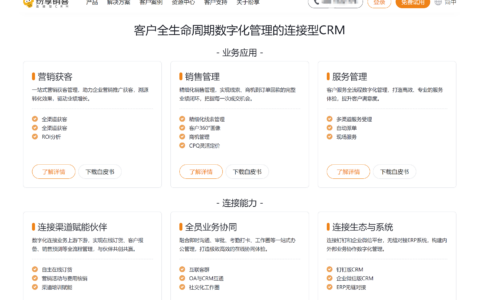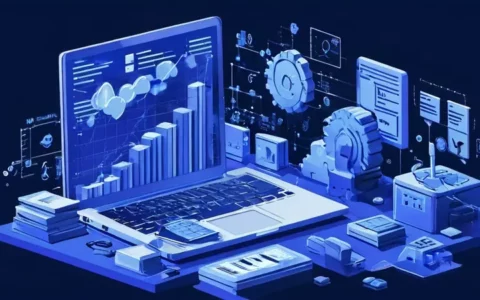
冲压机编程是制定冲压机操作指令的过程, 其中包括确定材料进料、冲压顺序和运动路径等步骤。在自动化制造中,这一过程至关重要,因为它确保机器以高效和精确的方式完成金属或其他材料的冲压任务。详细而言,此过程包括创建用于控制机器压力、速度和定位的代码,这些代码通常由专业的计算机辅助制造(CAM)软件生成。通过编程,冲压机能够进行复杂的操作,如切割、成形和折弯,而这些都是制造行业中常见的需求。
I、INTRODUCTION TO PUNCH PRESS PROGRAMMING
Punch press programming involves creating a set of instructions for a punch press machine to execute a sequence of operations on a workpiece. This programming is typically carried out using CAM software where the programmer inputs the design, and the software translates it into a set of machine-readable instructions. A punch press can perform various operations such as blanking, piercing, forming, and drawing. The precision and efficiency of these operations largely depend on the quality of the programming.
II、TYPES OF PUNCH PRESSES
Punch presses come in various types, each with specific features suited for different fabrication needs. The common types include mechanical, hydraulic, and servo-driven punch presses. Mechanical punch presses are powered by an electric motor and a flywheel, and they are known for their high-speed capabilities. Hydraulic punch presses use hydraulic oil as a pressurizing medium and are notable for their ability to exert a constant force throughout the stroke. Servo-driven punch presses are equipped with servo motors that provide precise control over the stroke and speed, making them ideal for complex and intricate punching operations.
III、ROLE OF CAM SOFTWARE IN PUNCH PRESS PROGRAMMING
Computer-Aided Manufacturing (CAM) software is integral to the punch press programming process. This software simplifies the transition from part design to production by automating the programming tasks. Using CAM, programmers can visualize the punching path, simulate the punching process, and optimize the layout of parts to maximize material usage. The software also assists in selecting the appropriate tools and calculating the most efficient sequence of operations, thereby reducing cycle times and minimizing wear on the machine.
IV、ADVANTAGES OF AUTOMATED PUNCH PRESS PROGRAMMING
Automated punch press programming offers numerous benefits over manual programming methods. It enhances precision by eliminating human errors and ensures consistent quality across batch production. The process also speeds up production as programs can be preloaded and machines can operate continuously with minimal intervention. Additionally, automated programming permits rapid adjustments for custom or variable production runs, which is essential in meeting diverse customer demands.
V、BEST PRACTICES IN PUNCH PRESS PROGRAMMING
To achieve optimal results, several best practices should be followed when programming a punch press. These include proper tool selection and maintenance, accurate material specification, and the application of the right punching strategy to minimize waste. It is also crucial to consider the nesting of parts to fully utilize the material and avoid collisions during the punching process. Keeping software and machine firmware up to date is necessary to harness the latest improvements in technology and maintain efficiency.
VI、CHALLENGES IN PUNCH PRESS PROGRAMMING
Despite its advantages, punch press programming does come with a set of challenges. One significant challenge is designing programs that can accommodate material variations such as thickness and strength. Another issue is the need for constant updates and revisions to the punch press programs to adapt to new designs or changes in material specifications. Ensuring the safety of operators and maintaining the machines in optimal condition are also ongoing concerns that require attention.
VII、FUTURE TRENDS IN PUNCH PRESS PROGRAMMING
The future of punch press programming looks to integrate advancements in artificial intelligence (AI) and machine learning. These technologies promise to further automate the optimization process, allowing machines to make data-driven decisions to improve efficiency and productivity. There's an increasing push towards connected machinery and the Internet of Things (IoT) for real-time monitoring and predictive maintenance. As such, punch press programming is progressing towards more intelligent, adaptive, and technologically sophisticated methodologies.
VIII、CONCLUSION
Punch press programming is a crucial element of modern manufacturing. Its evolution continues to play a pivotal role in the efficiency of production lines and the quality of the final products. As technology advances, punch press programming will likely become even more nuanced and integrated, requiring programmers to possess advanced skills and a deep understanding of both software and machinery. With the continued innovation in CAM software and punching technology, punch press programming will remain a dynamic and essential field within manufacturing.
相关问答FAQs:
1. 冲压机编程是什么?
冲压机编程是指将冲压机器人按照预定的工艺要求和程序进行编程,使其能够自动完成冲压工作。冲压机编程一般包括工艺参数的设置、冲压路径的规划和安全保护等方面。
2. 冲压机编程的作用是什么?
冲压机编程的主要作用是提高生产效率和产品质量,实现自动化冲压操作。通过合理的编程,可以优化冲压路径,减少加工时间,提高加工精度和质量稳定性。此外,冲压机编程还可以降低人工劳动强度,提升工作安全性。
3. 冲压机编程的步骤有哪些?
冲压机编程一般包括以下几个步骤:
-
数据准备:首先,需要准备好冲压零件的CAD模型和相关工艺参数,包括材料信息、冲头尺寸、模具规格等。
-
工艺参数设置:根据实际情况和要求,设置合适的冲头力度、冲压速度、工艺温度等参数,以保证冲压过程中的安全和质量。
-
冲压路径规划:根据零件的形状、材料特性和工艺要求,通过冲压仿真软件或手动计算,确定冲压点、顺序和路径,确保冲压过程中不产生变形、毛刺等质量问题。
-
编写程序:根据冲压路径规划的结果,编写适当的程序,对冲压机器人进行编程。程序中一般包括坐标系的设定、运动轨迹的描述、动作指令的配置等。
-
试运行和优化:在编写完程序后,进行试运行,对冲压过程进行检查和调整,以确认程序运行稳定并达到预期效果。如有必要,还可以根据试运行结果进行优化和调整,以进一步提高生产效率和质量水平。
以上是常见的冲压机编程步骤,不同的冲压机型号和工艺要求可能会有所不同。对于复杂的冲压过程,可能需要通过专业软件进行仿真和优化,以确保编程的准确性和效果。
文章标题:冲压机编程是什么,发布者:飞飞,转载请注明出处:https://worktile.com/kb/p/2132522

 微信扫一扫
微信扫一扫  支付宝扫一扫
支付宝扫一扫 



